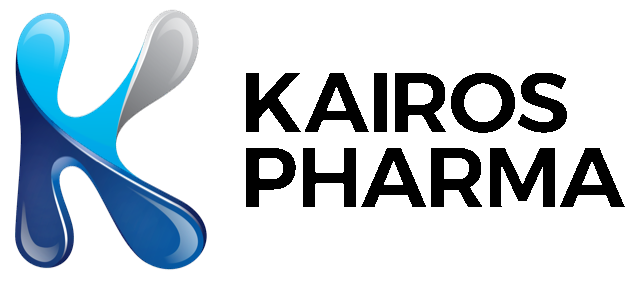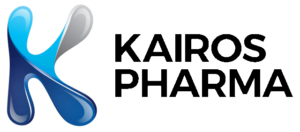Scientific Explanations & References
Discover The Science Behind Our Innovations
Our every innovation is firmly rooted in scientific rigour and evidence-based research. This page offers detailed explanations of the mechanisms, processes, and technologies that drive our groundbreaking cancer therapies. With references to peer-reviewed studies and clinical data, we aim to provide a transparent look into the research that underpins our advancements.
Our commitment to scientific integrity ensures that every step of our journey—from discovery to treatment development—is guided by validated knowledge and cutting-edge methodologies, bringing hope and precision to those in need.

Scientific Explanations & References
DRUG
MECHANISM OF ACTION
PDF LINK
ENV 105
• Antibody that targets CD105 (Endoglin) by inhibiting BMP signaling to reverse cancer drug resistance
• Papers: Kato et al., Madhav et al. (Science behind ENV105), Smith et al (Phase II trial results)
• Papers not by our group: Schoonderwoerd et al. shows the synergy with checkpoint inhibition of CD105 targeting and Wu et al. discusses synergy of ENV105 with immunotherapy.
• ENV 105 in EGFR dependent non-small cell lung cancer
KROS 101
• Small molecule agonist for GITR ligand
• Papers: Zhou et al. (Human) hGITR PNAS paper of Ram Murali showing crystal structure of the human GITR ligand used to develop KROS 101 agonist and KROS 102 antagonist. Zhou et al. (Mouse), PNAS paper showing mouse GITR activation by Ram’s group (our VP of Research and Development) through structural biology.
KROS 102
• Small molecule antagonist for GITR ligand
• Papers for KROS101 are relevant to KROS 102 as well, but this antagonist prevents GITR ligand from working inhibiting T cell growth
KROS 201
• Activated T cells targeting glioblastoma cancer stem cell antigens
• Papers: Miyaguchi et al. shows translational development of activated T cell technology, Wen et al., Clin Cancer Research paper is the randomized multi-institutional phase II study showing that a multi-epitope DC vaccine significantly improves progression free survival. We use 6 of the antigens in our activated T cell technology, and also add 3 more CTL antigens and 9 helper epitopes in order to improve the robustness of the immunogenicity, Yuan et al. Oncogene paper is our first report of isolation of cancer stem cells from glioblastoma which is the target cell in KROS 201, Xu et al. Stem Cell paper shows strategy of immunologically targeting cancer stem cells and demonstrates some of the antigens overexpressed on glioblastoma cancer stem cells.
KROS 301
• Small molecule inhibiting relA nuclear translocation in the NF-kB molecular pathway in dependent cancers
• Paper: Kanzaki et al., shows KROS 301 in triple negative breast cancer model
KROS 401
• Cyclic peptide inhibits IL-4 and and IL-13 receptors on macrophages to reverse M1 to M2 transition
• Paper: Xue et al. IL4- IL13 inhibitor paper in Nature Communications showing KROS 401 activity in a chronic pancreatitis model reversing M1 to M2 transition in macrophages
ENV 205
• Mitochondrial DNA depletion to reverse doxetaxel chemotherapy resistance
• Paper: Halder et al., PNAS paper showing mechanism of action of ENV 205
Related links

Pipeline
Explore our drug development pipeline, showcasing innovative therapies and cutting-edge technologies aimed at addressing unmet medical needs and transforming patient outcomes.

Intellectual Property
Discover our robust intellectual property portfolio, protecting groundbreaking innovations and ensuring the advancement of transformative therapies for cancer and beyond.

Investors
Access key investor information, financial updates, strategic plans, and insights into our mission to drive innovation and deliver transformative therapies in cancer research and treatment.
Scientific Explanations & References
Discover
The Science Behind
Our Innovations

Our every innovation is firmly rooted in scientific rigour and evidence-based research. This page offers detailed explanations of the mechanisms, processes, and technologies that drive our groundbreaking cancer therapies. With references to peer-reviewed studies and clinical data, we aim to provide a transparent look into the research that underpins our advancements.
Our commitment to scientific integrity ensures that every step of our journey—from discovery to treatment development—is guided by validated knowledge and cutting-edge methodologies, bringing hope and precision to those in need.
Scientific Explanations & References
DRUG
MECHANISM OF ACTION
PDF LINK
ENV 105
• Antibody that targets CD105 (Endoglin) by inhibiting BMP signaling to reverse cancer drug resistance
• Papers: Kato et al., Madhav et al. (Science behind ENV105), Smith et al (Phase II trial results)
• Papers not by our group: Schoonderwoerd et al. shows the synergy with checkpoint inhibition of CD105 targeting and Wu et al. discusses synergy of ENV105 with immunotherapy.
• ENV 105 in EGFR dependent non-small cell lung cancer
KROS 101
• Small molecule agonist for GITR ligand
• Papers: Zhou et al. (Human) hGITR PNAS paper of Ram Murali showing crystal structure of the human GITR ligand used to develop KROS 101 agonist and KROS 102 antagonist. Zhou et al. (Mouse), PNAS paper showing mouse GITR activation by Ram’s group (our VP of Research and Development) through structural biology.
KROS 102
• Small molecule antagonist for GITR ligand
• Papers for KROS101 are relevant to KROS 102 as well, but this antagonist prevents GITR ligand from working inhibiting T cell growth
KROS 201
• Activated T cells targeting glioblastoma cancer stem cell antigens
• Papers: Miyaguchi et al. shows translational development of activated T cell technology, Wen et al., Clin Cancer Research paper is the randomized multi-institutional phase II study showing that a multi-epitope DC vaccine significantly improves progression free survival. We use 6 of the antigens in our activated T cell technology, and also add 3 more CTL antigens and 9 helper epitopes in order to improve the robustness of the immunogenicity, Yuan et al. Oncogene paper is our first report of isolation of cancer stem cells from glioblastoma which is the target cell in KROS 201, Xu et al. Stem Cell paper shows strategy of immunologically targeting cancer stem cells and demonstrates some of the antigens overexpressed on glioblastoma cancer stem cells.
KROS 301
• Small molecule inhibiting relA nuclear translocation in the NF-kB molecular pathway in dependent cancers
• Paper: Kanzaki et al., shows KROS 301 in triple negative breast cancer model
KROS 401
• Cyclic peptide inhibits IL-4 and and IL-13 receptors on macrophages to reverse M1 to M2 transition
• Paper: Xue et al. IL4- IL13 inhibitor paper in Nature Communications showing KROS 401 activity in a chronic pancreatitis model reversing M1 to M2 transition in macrophages
ENV 205
• Mitochondrial DNA depletion to reverse doxetaxel chemotherapy resistance
• Paper: Halder et al., PNAS paper showing mechanism of action of ENV 205
Related links

Pipeline
Explore our drug development pipeline, showcasing innovative therapies and cutting-edge technologies aimed at addressing unmet medical needs and transforming patient outcomes.

Intellectual Property
Discover our robust intellectual property portfolio, protecting groundbreaking innovations and ensuring the advancement of transformative therapies for cancer and beyond.

Investors
Access key investor information, financial updates, strategic plans, and insights into our mission to drive innovation and deliver transformative therapies in cancer research and treatment.
Scientific Explanations
& References
Discover The Science Behind Our Innovations
Our every innovation is firmly rooted in scientific rigour and evidence-based research. This page offers detailed explanations of the mechanisms, processes, and technologies that drive our groundbreaking cancer therapies. With references to peer-reviewed studies and clinical data, we aim to provide a transparent look into the research that underpins our advancements.
Our commitment to scientific integrity ensures that every step of our journey—from discovery to treatment development—is guided by validated knowledge and cutting-edge methodologies, bringing hope and precision to those in need.
Scientific Explanations
& References
Drug: ENV 105
MECHANISM OF ACTION
• Antibody that targets CD105 (Endoglin) by inhibiting BMP signaling to reverse cancer drug resistance
• Papers: Kato et al., Madhav et al. (Science behind ENV105), Smith et al (Phase II trial results)
• Papers not by our group: Schoonderwoerd et al. shows the synergy with checkpoint inhibition of CD105 targeting and Wu et al. discusses synergy of ENV105 with immunotherapy.
• ENV 105 in EGFR dependent non-small cell lung cancer
PDF LINK
Drug: KROS 101
MECHANISM OF ACTION
• Small molecule agonist for GITR ligand
• Papers: Zhou et al. (Human) hGITR PNAS paper of Ram Murali showing crystal structure of the human GITR ligand used to develop KROS 101 agonist and KROS 102 antagonist. Zhou et al. (Mouse), PNAS paper showing mouse GITR activation by Ram’s group (our VP of Research and Development) through structural biology.
PDF LINK
Drug: KROS 102
MECHANISM OF ACTION
Small molecule antagonist for GITR ligand
• Papers for KROS101 are relevant to KROS 102 as well, but this antagonist prevents GITR ligand from working inhibiting T cell growth
PDF LINK
Drug: KROS 201
MECHANISM OF ACTION
• Activated T cells targeting glioblastoma cancer stem cell antigens
• Papers: Miyaguchi et al. shows translational development of activated T cell technology, Wen et al., Clin Cancer Research paper is the randomized multi-institutional phase II study showing that a multi-epitope DC vaccine significantly improves progression free survival. We use 6 of the antigens in our activated T cell technology, and also add 3 more CTL antigens and 9 helper epitopes in order to improve the robustness of the immunogenicity, Yuan et al. Oncogene paper is our first report of isolation of cancer stem cells from glioblastoma which is the target cell in KROS 201, Xu et al. Stem Cell paper shows strategy of immunologically targeting cancer stem cells and demonstrates some of the antigens overexpressed on glioblastoma cancer stem cells.
PDF LINK
Drug: KROS 301
MECHANISM OF ACTION
• Small molecule inhibiting relA nuclear translocation in the NF-kB molecular pathway in dependent cancers
• Paper: Kanzaki et al., shows KROS 301 in triple negative breast cancer model
PDF LINK
Drug: KROS 401
MECHANISM OF ACTION
• Cyclic peptide inhibits IL-4 and and IL-13 receptors on macrophages to reverse M1 to M2 transition
• Paper: Xue et al. IL4- IL13 inhibitor paper in Nature Communications showing KROS 401 activity in a chronic pancreatitis model reversing M1 to M2 transition in macrophages
PDF LINK
Drug: ENV 205
MECHANISM OF ACTION
• Mitochondrial DNA depletion to reverse doxetaxel chemotherapy resistance
• Paper: Halder et al., PNAS paper showing mechanism of action of ENV 205
PDF LINK
Related links

Pipeline

Intellectual Property
Discover our robust intellectual property portfolio, protecting groundbreaking innovations and ensuring the advancement of transformative therapies for cancer and beyond.

Investors
Access key investor information, financial updates, strategic plans, and insights into our mission to drive innovation and deliver transformative therapies in cancer research and treatment.

